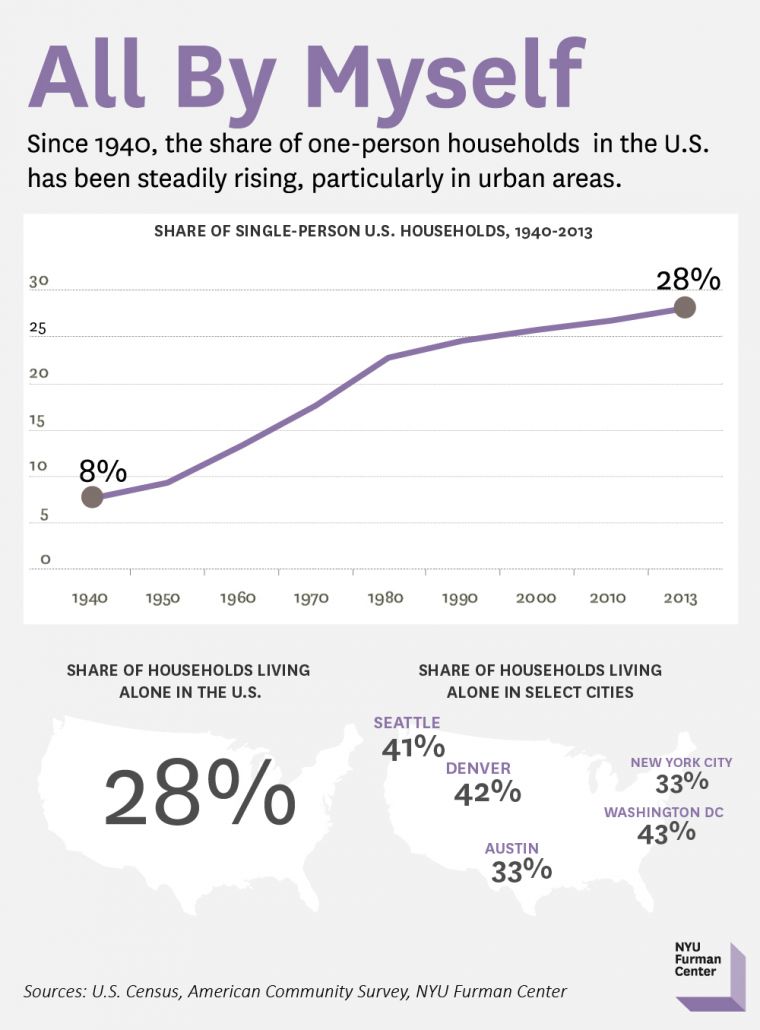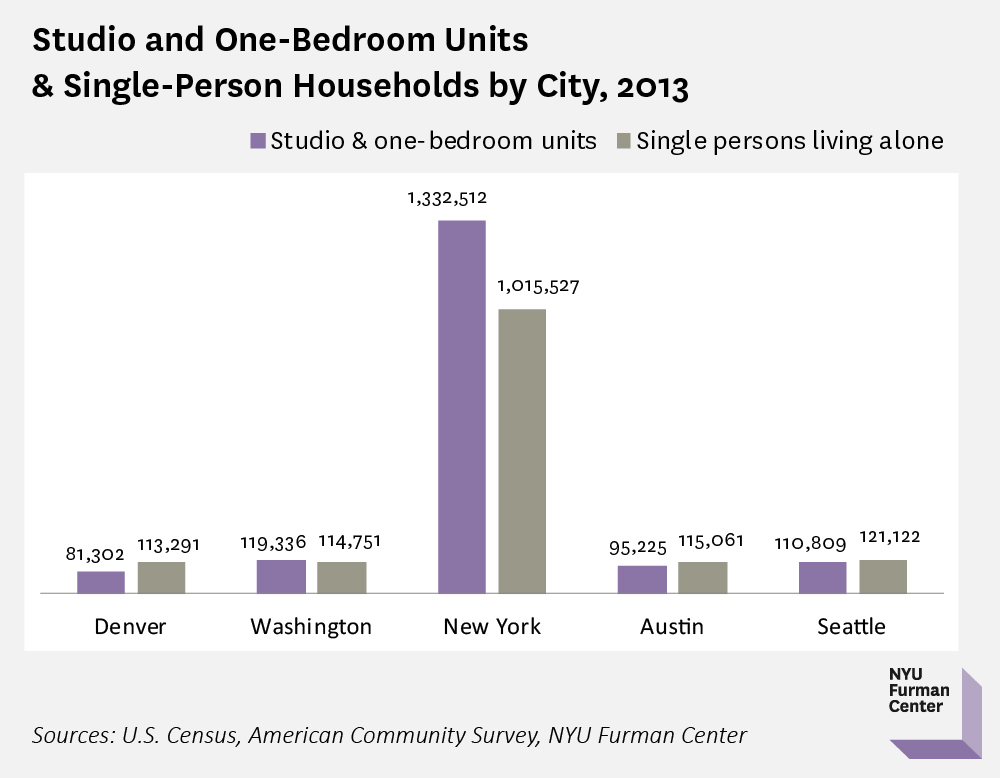
All By Myself

Since 1940, the share of one-person households has been steadily rising in the U.S., particularly in urban areas. These changes in household composition have led to a growing mismatch between household composition and existing housing supply.
According to findings originally published in the NYU Furman Center report, “Responding to Changing Households: Regulatory Challenges for Micro-Units and Accessory Dwelling Units,” the United States saw an increase in the share of single-person households between 1940 and 2013.
In the U.S., the share of households consisting of one person living alone grew from eight percent in 1940 to over 28 percent of all households in 2013. Urban areas are seeing even higher shares of single-person households; people living alone accounted for more than 40 percent of all households in Seattle, Denver, and Washington, D.C. in 2013.
The rise in people living solo has led to a growing mismatch between household composition and existing supply. The following figure indicates that the number of single persons living alone exceeds or nearly matches the number of studio and one-bedroom units in each of the cities studied in the report, despite the fact that many of those units are occupied by couples without children.

For more information on single-person households, including NYU Furman Center research on microunit housing, see:
White Paper: Responding to Changing Households: Regulatory Challenges for Micro-Units and Accessory Dwelling Units (PDF)
Research Brief: Compact Units: Demands and Challenges (PDF)


